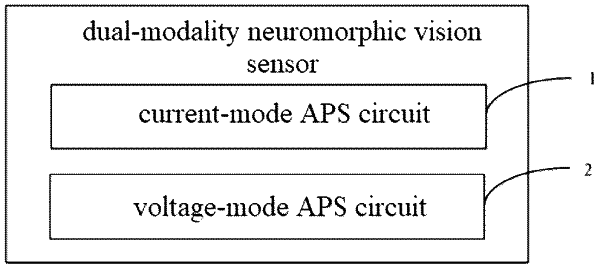| CPC H04N 25/702 (2023.01) [G06V 10/147 (2022.01); H04N 25/53 (2023.01); H04N 25/75 (2023.01); H04N 25/77 (2023.01); H04N 25/134 (2023.01)] | 10 Claims |

|
1. A dual-modality neuromorphic vision sensor, comprising a first-type current-mode active pixel sensor (APS) circuit and a voltage-mode APS circuit;
the first-type current-mode APS circuit comprises a target first-type photosensitive device; and the target first-type photosensitive device is configured to obtain a target light signal, and convert the target light signal into a first-type current signal, and the first-type current-mode APS circuit is configured to output, based on a difference between the first-type current signal and a sum of second-type current signals converted by a first preset quantity of non-target first-type photosensitive devices around the target first-type photosensitive device, a specified digital signal representing light intensity gradient information in the target light signal;
the voltage-mode APS circuit comprises a second-type photosensitive device, the second-type photosensitive device is configured to obtain the target light signal, extract a light signal of a specified frequency band from the target light signal, and convert the light signal of the specified frequency band into a third-type current signal, and the voltage-mode APS circuit is configured to output, based on the third-type current signal, a target voltage signal representing light intensity information in the target light signal;
wherein, each of the non-target first-type photosensitive devices is connected to a first-type control switch in series.
|